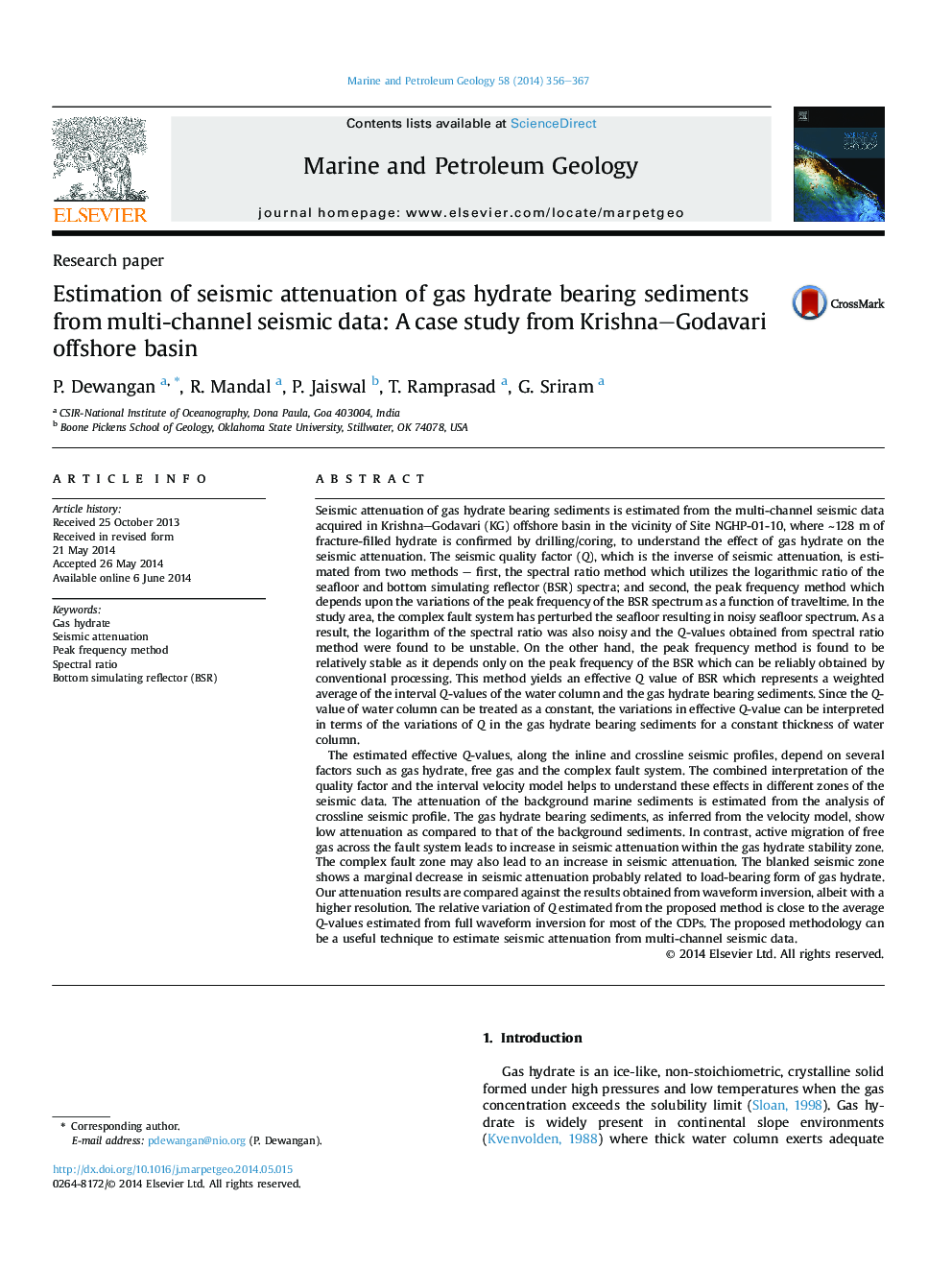| کد مقاله | کد نشریه | سال انتشار | مقاله انگلیسی | نسخه تمام متن |
|---|---|---|---|---|
| 6435235 | 1351619 | 2014 | 12 صفحه PDF | دانلود رایگان |

- Peak frequency method: an effective technique for Q-estimation.
- Low attenuation for gas hydrate bearing sediments.
- High attenuation for free gas bearing faults and complex fault zone.
Seismic attenuation of gas hydrate bearing sediments is estimated from the multi-channel seismic data acquired in Krishna-Godavari (KG) offshore basin in the vicinity of Site NGHP-01-10, where â¼128Â m of fracture-filled hydrate is confirmed by drilling/coring, to understand the effect of gas hydrate on the seismic attenuation. The seismic quality factor (Q), which is the inverse of seismic attenuation, is estimated from two methods - first, the spectral ratio method which utilizes the logarithmic ratio of the seafloor and bottom simulating reflector (BSR) spectra; and second, the peak frequency method which depends upon the variations of the peak frequency of the BSR spectrum as a function of traveltime. In the study area, the complex fault system has perturbed the seafloor resulting in noisy seafloor spectrum. As a result, the logarithm of the spectral ratio was also noisy and the Q-values obtained from spectral ratio method were found to be unstable. On the other hand, the peak frequency method is found to be relatively stable as it depends only on the peak frequency of the BSR which can be reliably obtained by conventional processing. This method yields an effective Q value of BSR which represents a weighted average of the interval Q-values of the water column and the gas hydrate bearing sediments. Since the Q-value of water column can be treated as a constant, the variations in effective Q-value can be interpreted in terms of the variations of Q in the gas hydrate bearing sediments for a constant thickness of water column.The estimated effective Q-values, along the inline and crossline seismic profiles, depend on several factors such as gas hydrate, free gas and the complex fault system. The combined interpretation of the quality factor and the interval velocity model helps to understand these effects in different zones of the seismic data. The attenuation of the background marine sediments is estimated from the analysis of crossline seismic profile. The gas hydrate bearing sediments, as inferred from the velocity model, show low attenuation as compared to that of the background sediments. In contrast, active migration of free gas across the fault system leads to increase in seismic attenuation within the gas hydrate stability zone. The complex fault zone may also lead to an increase in seismic attenuation. The blanked seismic zone shows a marginal decrease in seismic attenuation probably related to load-bearing form of gas hydrate. Our attenuation results are compared against the results obtained from waveform inversion, albeit with a higher resolution. The relative variation of Q estimated from the proposed method is close to the average Q-values estimated from full waveform inversion for most of the CDPs. The proposed methodology can be a useful technique to estimate seismic attenuation from multi-channel seismic data.
Journal: Marine and Petroleum Geology - Volume 58, Part A, December 2014, Pages 356-367